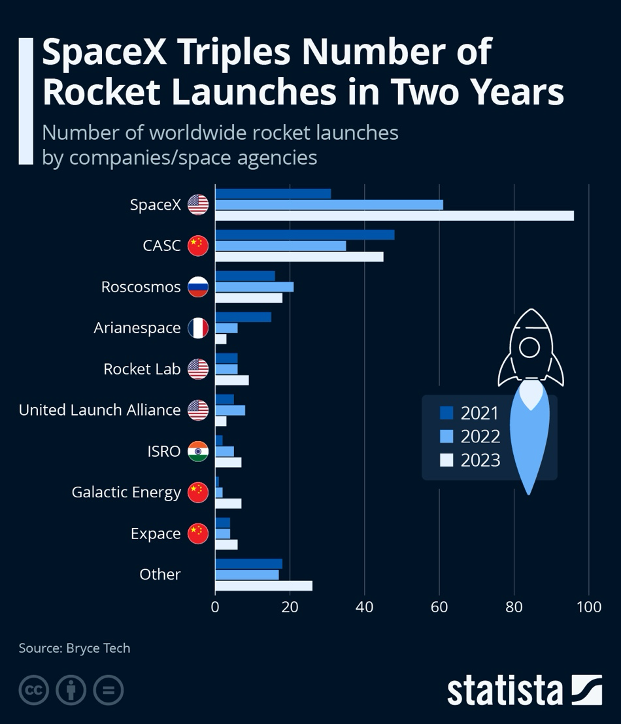June Newsletter
What a busy few weeks it’s been around the globe!
In this month’s newsletter, I’ve pulled together just a few developments that feel especially relevant to the ongoing global tech race. Consider it a quick recap of the media landscape (no, it’s not at all because I’m struggling to keep up with the news cycle!).
Last week, Donald Trump and Xi Jinping had a phone conversation, their first direct exchange since early this year and following months of tit-for-tat tariff retaliation. The tone was described as “quite positive,” with the discussion centring on trade deals, critical mineral exports, and each side restating firm positions on its hard-line issues like Taiwan. A detailed rundown of the call is available on different media outlets, but what caught my eye was the very minimalist summary released by the Chinese Ministry of Foreign Affairs.
The opening line says: “On the evening of June 5, President Xi Jinping took a phone call from U.S. President Donald J. Trump.” Just one sentence, but the wording does a lot of heavy lifting. As I read it, “took a phone call” makes it clear that Xi did not initiate, subtly positioning Trump as the one seeking engagement and setting the tone for who holds control in this relationship. Beijing’s brief, deliberate, and assertive language reinforces an image of strength and stability, in contrast to the recent oscillations in American politics.
Following the saga, negotiations between China and the US continued this week in London. Kevin Xu’s analysis from Interconnected offers an overview of what’s on the table, outlining each side’s bargaining position across key tech domains. The US remains highly reliant on China for critical components essential to modern manufacturing: rare earth elements, batteries, and advanced production capabilities, to name a few. These dependencies have led many firms, including but not limited to American ones, to bifurcate and expand their operations within China to secure vital supplies. Recognising this leverage, Beijing has signalled a willingness to permit limited technology licensing and collaboration that could benefit both sides, particularly in ways that avoid inflating the US trade deficit through goods alone.
Conversely, China is expected to seek relief from strict US export controls on advanced semiconductor manufacturing tools, although Trump is unlikely to concede. In the latest measure, several companies that provide chip design software have been instructed to halt their services to China. In parallel, AI hardware remains a sticking point. For example, while Nvidia continues to advocate for sales to China, both governments seem increasingly indifferent due to evolving domestic alternatives and policy priorities. While a grand deal remains uncertain, these talks may mark a shift towards defining long-term rules in tech relations between the two rivals.
While all that is happening, we all know what actually stole the show: the dramatic fallout between Musk and Trump. For many, it came as no surprise, and history is full of once-chummy strongmen turning on their allies when egos (and interests) collide. The quarrel between them is entertaining to follow, but the consequences could be significant, particularly for America’s space sector.
Trump has threatened to cut off support for SpaceX, prompting NASA and the Pentagon to accelerate efforts towards developing alternative launch systems. However, no competitor is currently positioned to match SpaceX’s scale and speed. It holds billions of dollars in both civilian and military contracts, serving as the backbone of US space launches and satellite infrastructure. Without it, the country’s ability to compete with China would be severely compromised. In a further move, Trump also withdrew the nomination of Jared Isaacman, Musk’s ally, as NASA administrator. Rumours suggest that he is now consulting with military leadership for a new candidate, raising eyebrows about the creeping military-civilian fusion in US space policy.
Source: Zandt 2024
With all the turbulence surrounding the US, Robert Keohane and Joseph Nye Jr. (in memoriam), the architects behind the theory of complex interdependence, have stepped in with a sharp reflection and declared The End of the Long American Century. They argue that while Trump accurately identifies the leverage points within a vast web of interdependencies, he has exploited them in “fundamentally counterproductive ways.” Instead of reinforcing the networks, norms, and alliances that have long amplified US influence, his administration has undermined them, eroding both hard and soft power. In doing so, they warn, the US risks forfeiting the trust and attractiveness that once sustained its global leadership, accelerating the decline of an international order it helped build.
To wrap things up, amid all the discussion about power, leverage, and influence, I wanted to mention the book I’m currently reading. Many of you might already be familiar with it, so this is hardly a recommendation – The Brussels Effect by Anu Bradford. While acquainted with the core argument, it’s embarrassing to admit I hadn’t made it through cover to cover. But with it resurfacing in conversations from various circles recently and the EU Space Act set to launch at the end of June, it felt like the right time to revisit it in full.
Looking ahead, CODE will kick off its first workshop focused on the intersection of AI development and geopolitics next week. We’re looking forward to welcoming distinguished scholars from across several countries, promising a rich and timely exchange of perspectives. We’ll be sure to share key takeaways in the next update.
Until then!



